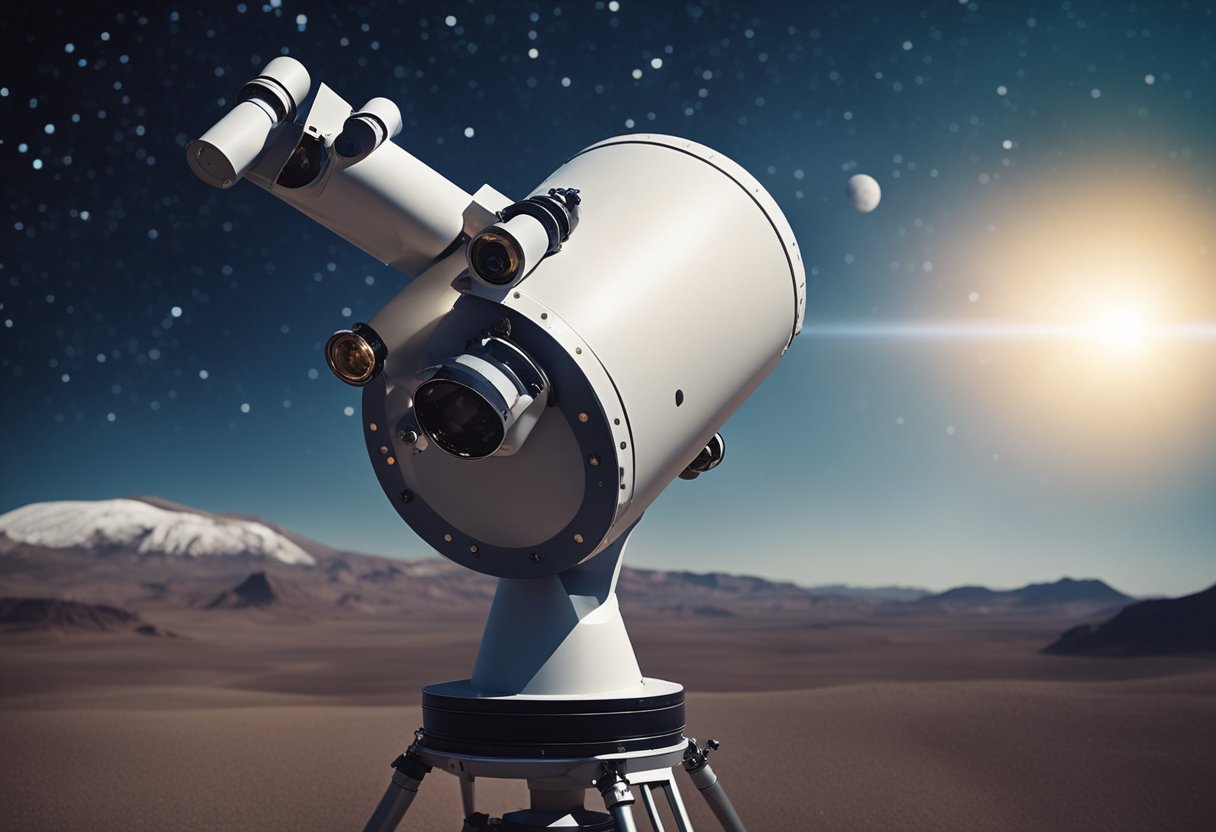
The Extraterrestrial Life Search is one of the most captivating pursuits in modern science. We grapple with profound questions about our place in the universe and the possibility of other life forms sharing this vast cosmic landscape. Advances in technology and a deeper understanding of life on Earth have propelled this search, enabling us to examine the habitability of exoplanets and investigate the fundamental biochemical basis of life as we know it.
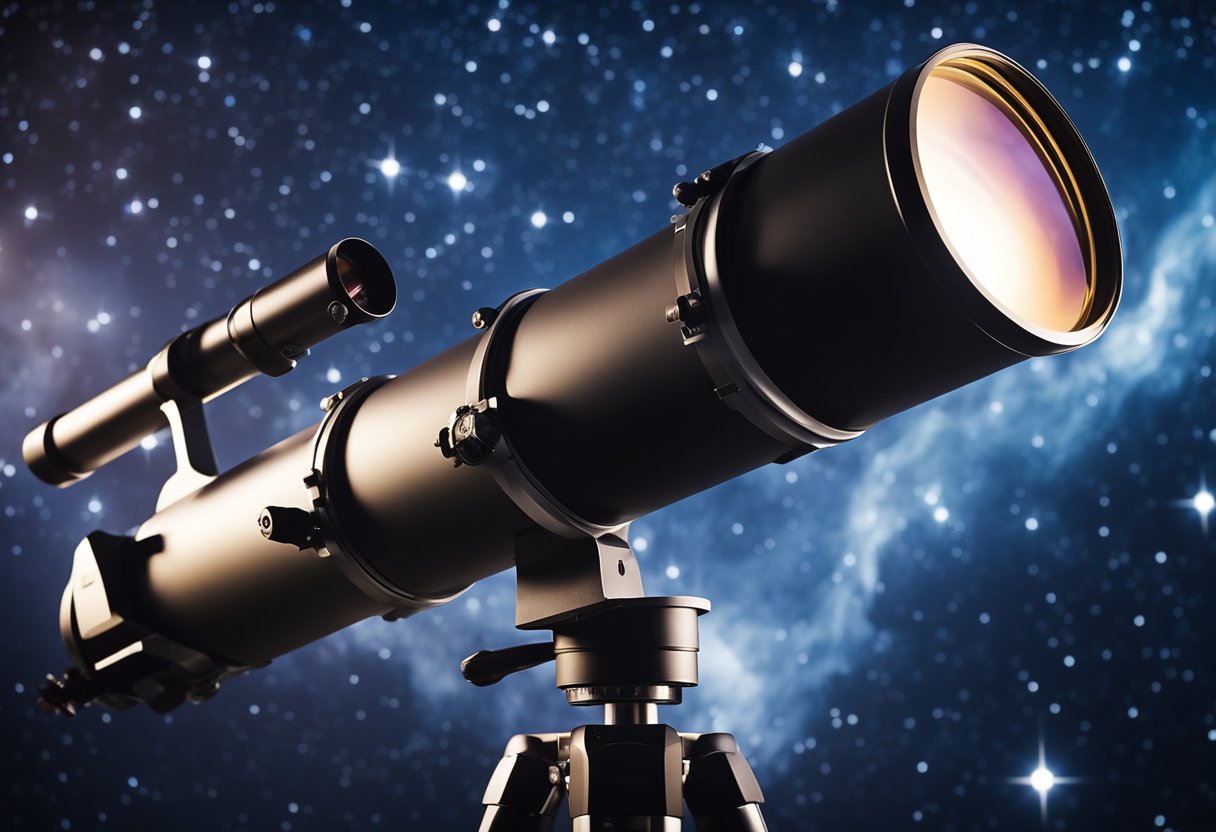
Our quest extends beyond just discovering microbial life. We’re also invested in the search for technosignatures that could indicate advanced civilisations. Researchers employ a plethora of methods and technologies to deduce potential signs of life, from studies of our own solar system’s planets and moons to monitoring distant galaxies for irregular patterns. The challenges we face in this endeavour are manifold, including deciphering ambiguous data and coping with sheer distances involved in space exploration. Nevertheless, our resolve fortifies with every mission, from those we have launched to those twinkling on the horizon of our future prospects.
The search for life beyond Earth is a multi-faceted endeavour, encompassing historical aspirations and contemporary technological pursuits. Our understanding continually evolves with the advent of new research and advancements.
Throughout history, we have been captivated by the possibility of extraterrestrial life. Ancient civilisations gazed at the stars, contemplating the existence of beings on other worlds. In the modern era, the establishment of organisations such as the Search for Extraterrestrial Intelligence (SETI) marked a significant shift from speculative philosophy to methodical investigation. SETI’s efforts, in particular, epitomised mankind’s desire to detect alien signals, harnessing radio telescopes to listen for potential communications from distant civilisations.
In our contemporary search efforts, NASA has played a pivotal role, deploying missions to Mars and beyond, while probing the atmospheres of exoplanets for signs of life. SETI continues to survey the cosmos at previously unexplored frequencies, embracing both the electromagnetic spectrum and artificial intelligence to decipher the vast data collected.
Advancements in astrobiology and the development of spacecrafts, like those envisioned by SpaceVoyageVentures.com, which discusses the role of space tourism in the future, allow us to dream of not just finding life, but one day visiting worlds where life may exist. We stand on the precipice of discovery, equipped with tools far superior to any that have come before. Our journey towards understanding extraterrestrial life is ever-expanding, driven by curiosity and the relentless pursuit of knowledge.
Exploration of exoplanets has been pivotal in our quest to find potentially habitable worlds beyond our solar system, where conditions could support life as we know it.
When we examine exoplanets, we’re essentially looking for signs that they could support life. Key among these signs is the presence of liquid water, which is essential for life on Earth. We use various methods to detect exoplanets, such as the transit method, which involves observing the light of a star for periodic dimming that indicates a planet passing in front of it. Determining whether these planets could support life involves assessing their size and mass to infer their composition and surface conditions.
In recent years, scientists have discovered a range of planets within the habitable zone of their stars, where temperatures are just right for water to exist in liquid form. These findings are exciting, as they suggest a higher likelihood of finding life elsewhere in the universe.
The term “Goldilocks Zone,” synonymous with the habitable zone, refers to the region around a star where the temperature is neither too hot nor too cold, allowing for liquid water on a planet’s surface. This zone is critical since water is a fundamental requirement for all known forms of life on Earth, and its presence on other planets could indicate the possibility of life.
A planet in the Goldilocks Zone not only has to be at the right distance from its star to support water but also needs to have a suitable atmosphere. An atmosphere can protect life from harmful cosmic radiation, keep surface temperatures stable, and possibly contain gases like oxygen or methane, which are considered potential biosignatures or indicators of life.
As we continue to discover exoplanets that lie within these habitable zones, our understanding of where life could exist outside our planet grows. The hunt for these worlds combines various disciplines, from astronomy to geology, in order to characterize the planets we find. Through missions and observations, we are taking significant steps toward one of the most profound discoveries humanity could make: life beyond Earth.

In our search for extraterrestrial life, we explore the biochemical underpinnings that sustain life universally. Understanding these foundations is crucial for identifying life beyond our planet.
Life as we know it hinges on a few essential elements, primarily carbon, hydrogen, nitrogen, oxygen, phosphorus, and sulphur. These elements form the building blocks of DNA and RNA, molecules central to genetic coding and molecular interaction within cells. Carbon’s versatile bonding capabilities make it a backbone for complex organic molecules, suggesting that carbon-based biochemistry might be a universal requirement for life.
A biosignature is any substance – such as an element, molecule, or phenomenon – that provides scientific evidence of past or present life. Our efforts focus on detecting these biosignatures in astrobiological missions. Identifying the signature of life involves intricate instruments that can discern molecules like amino acids, which are critical to life’s processes. For instance, a mars rover equipped with a spectrometer might analyse soil samples for organic compounds, hinting at the presence of life forms.
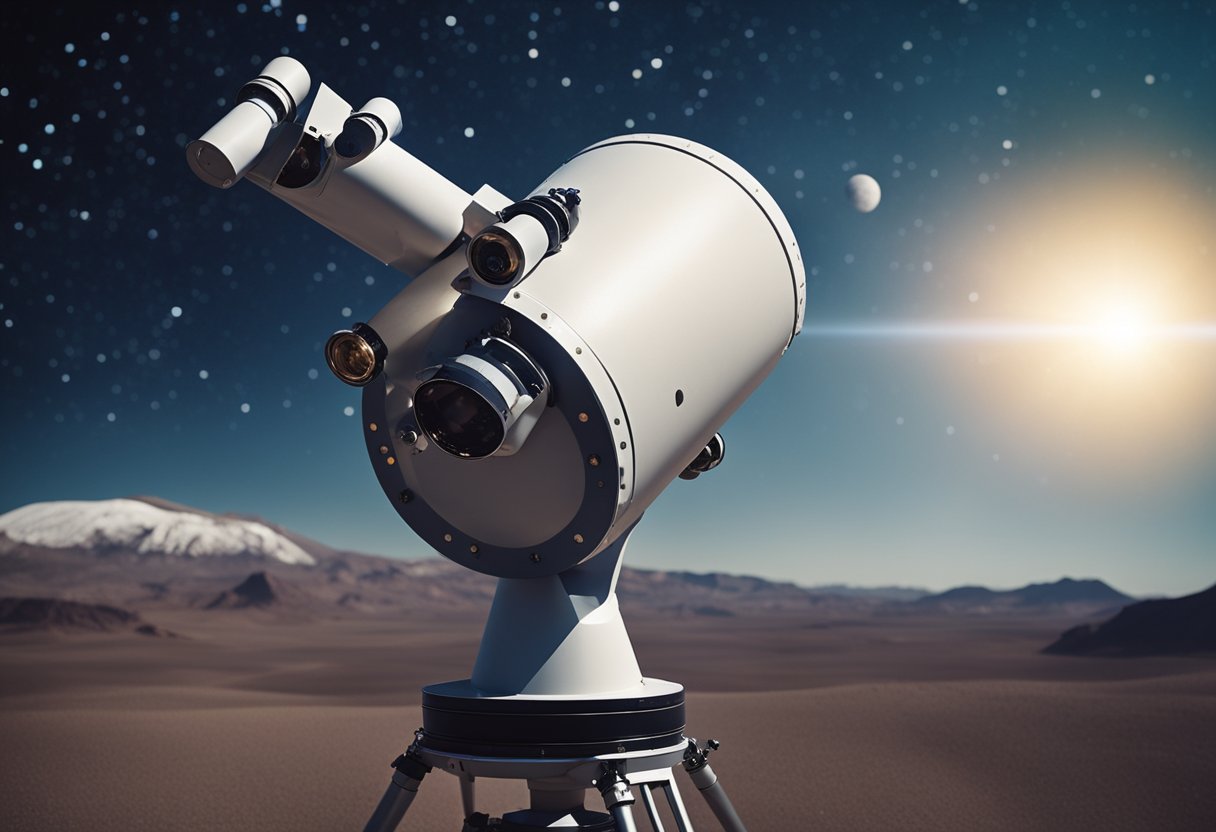
Our pursuit of extraterrestrial life has taken a sophisticated turn with the study of technosignatures—evidence of alien technologies—that may reveal the existence of advanced civilisations beyond Earth.
Technosignatures reflect the technological activities of a civilisation. Identifying them involves searching for signals or structures that are unlikely to occur naturally, such as radio frequencies specifically patterned to indicate artificial origin. NASA has expanded its scope to look for such signatures, including artificial chemicals in exoplanet atmospheres and infrared signatures of possible megastructures.
One proposed technosignature is artificial light from cities on distant worlds, which could be detected with our current technology. For example, should a planet pass in front of its star, a dimming effect coupled with unusual light emissions at certain wavelengths could be indicative of city lights.
First formulated by Frank Drake, the Drake Equation attempts to estimate the number of technological civilizations that might exist in our galaxy. It combines various astrobiological factors such as the average rate of star formation, the fraction of those stars with planets, and the number of planets that could potentially support life.
The equation highlights the likelihood of communicative civilisations based on known variables and the realities of astronomical and biological conditions. While it has faced scrutiny for its speculative nature, it remains a guiding framework for our search for extraterrestrial intelligence.
In our quest, we use Earth’s own technological capabilities as benchmarks, reasoning that an advanced civilisation might use similar technologies that produce observable ‘footprints’. This also leads us to ask if our current stage of development allows us to detect such a civilisation or if we’re limited by our technological infancy—an exciting but sobering thought.
If you’re intrigued by the developments in space exploration and the possibility of space tourism, you might find the nascent website SpaceVoyageVentures.com quite informative. It provides an insight into our potential to not just find other civilisations but to expand our presence into the cosmos.
Exploring the cosmos for signs of life is an ongoing quest involving sophisticated technology and dedicated missions. Reaching beyond Earth, various space missions leverage telescopes and spacecraft to scan the skies for extraterrestrial existence.
James Webb Space Telescope (JWST): Regarded as the most powerful space telescope ever built, JWST aims to study the universe in infrared and is pivotal for the search for life on other planets. It was developed in collaboration between NASA, the European Space Agency, and the Canadian Space Agency.
Kepler Space Telescope: Launched by NASA, the Kepler mission revolutionised our understanding of extraterrestrial worlds. By detecting thousands of exoplanets, Kepler contributed significantly to our quest to find habitable zones where life might exist.
Historic Missions: Our neighbouring planet Mars has been the subject of intense study. Various missions, such as NASA’s Perseverance and Curiosity rovers, have roamed the Martian surface to detect signs of past microbial life and prepare for future human exploration.
Spacecraft: Robotic spacecraft have played a pivotal role in Mars exploration. They’ve conducted detailed surveys of the Martian atmosphere, geography, and potential water sources crucial for life.
Furthermore, as we continue our pursuit of knowledge, platforms like SpaceVoyageVentures.com discuss the future of space exploration and space tourism, highlighting trips that may soon expand our personal experiences beyond Earth.
Our solar system hosts a variety of celestial bodies that present the possibility of harbouring extraterrestrial life. The search for life beyond Earth focuses primarily on water-rich environments, where life as we know it is most likely to thrive. Consequently, the exploration of certain moons and planets where water, ice, and suitable conditions exist has become paramount in our quest.
Mars has been a focus for extraterrestrial life research due to evidence of liquid water in its past. Robotic missions, such as NASA’s Perseverance rover, aim to determine the planet’s habitability and search for signs of ancient microbial life. Discoveries of subsurface lakes trapped beneath ice heighten our expectations of finding life forms.
Similarly, Europa, a moon of Jupiter, offers a compelling target in the search for extraterrestrial life. Its global subsurface ocean, protected by a thick ice crust, may provide conditions suitable for life. Future missions, like NASA’s planned Europa Clipper, are set to investigate the moon’s habitability by scrutinising its icy surface and underlying ocean.
Enceladus, one of Saturn’s icy moons, has intrigued us with its water-rich plumes ejecting from the south polar region. The Cassini spacecraft detected organic molecules in these plumes, suggesting hydrothermal activity, which is a key ingredient for life.
On the other hand, Titan, Saturn’s largest moon, possesses lakes and rivers of liquid hydrocarbons. With its thick atmosphere and organic chemistry, Titan is a unique environment in the solar system. NASA’s proposed Dragonfly mission to Titan aims to explore its prebiotic chemistry and potential for life.
We’ve also seen promising steps towards our future exploration of these heavenly bodies through ventures such as SpaceVoyageVentures.com, which not only documents potential space tourism trips but also sheds light on the ongoing scientific missions that might one day answer the enigmatic question of life beyond Earth.
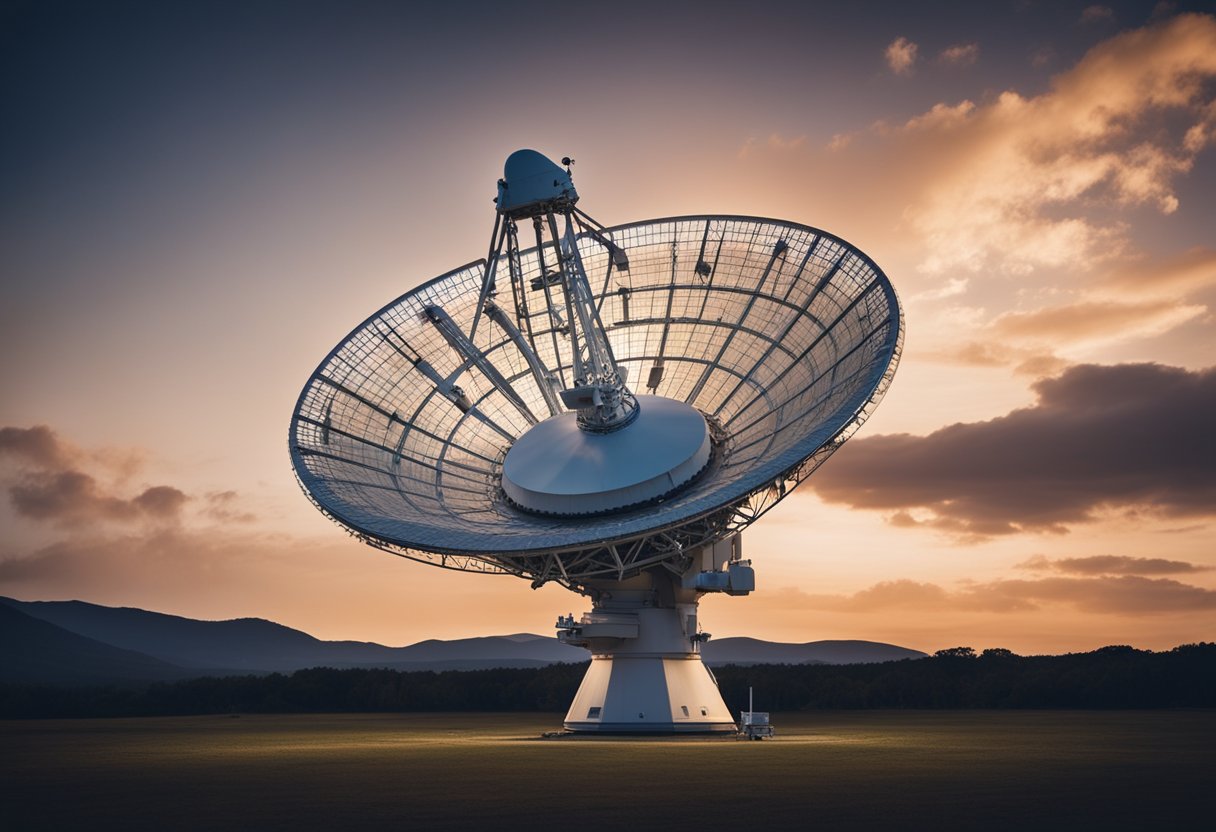
In our pursuit of uncovering whether we are alone in the universe, we employ various search methodologies and innovative technologies focused on detecting signs of extraterrestrial life.
We utilise telescopes and space telescopes for astrophysical measurements to observe celestial bodies and phenomena. By surveying different regions of the cosmos, we gain insights into the environmental conditions that could support life.
When it comes to spectroscopic analysis, we capitalise on techniques like spectroscopy and mass spectrometry to examine the composition of distant planets and moons.
Through these two main avenues, we inch closer to answering the profound question of extraterrestrial existence.
While we explore the unfathomable depths of space, back on Earth, ventures like SpaceVoyageVentures.com document the very real progress towards not just finding life, but also experiencing the cosmos firsthand through space tourism. This fascinating enterprise stands testament to our intrinsic desire to reach out and touch the stars, moving from mere observation to physical exploration.
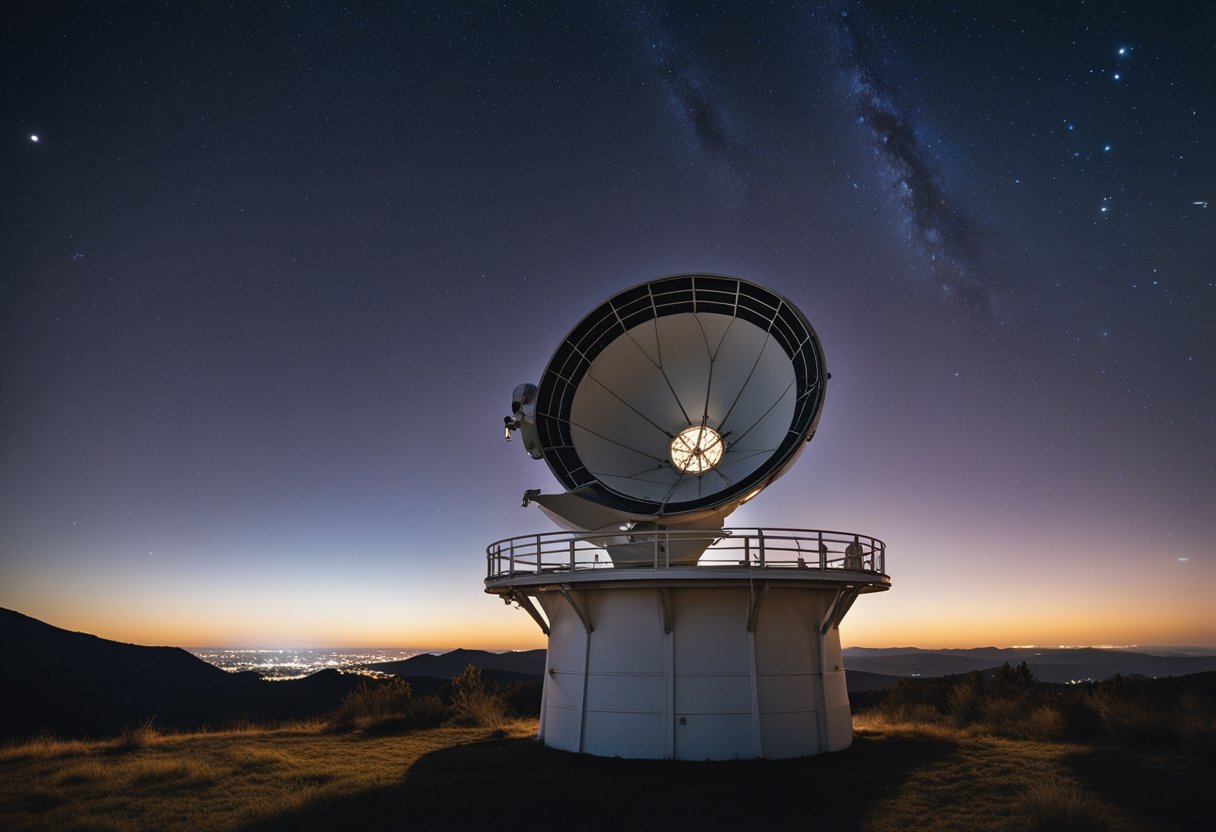
When we examine the search for extraterrestrial life, we cannot overlook the profound effects that cosmic phenomena have on the potential for life as we know it. Stellar radiation and astrophysical processes play pivotal roles in shaping the habitability of various environments beyond our planet.
Stars are the beacons of the cosmos, emitting an array of electromagnetic spectrum radiation from their combustion processes. Crucially, it is the ultraviolet (UV) light from stars that impacts planetary atmospheres the most significantly. Our understanding of UV radiation’s effect on organic molecules is pivotal in hypothesising the existence of life elsewhere. For instance, on Earth, UV light can damage DNA, leading to mutations or even preventing life from developing on a planet’s surface. Conversely, UV radiation can also provide the energy needed for chemical reactions that produce organic molecules, demonstrating its dual role as both a catalyst for and a barrier to life.
By exploring different stars and their radiation characteristics, we can determine the zones around these stars where life might thrive, commonly known as the “habitable zone. It’s within these zones that planets could ostensibly maintain liquid water, an essential ingredient for life as we know it.
The fabric of the universe is continuously moulded by various astrophysical processes that can either foster or hinder the development of life. Cosmic events such as supernovae can spew essential elements into space, seeding potential life-harbouring worlds. At the same time, these cataclysmic explosions could also strip planets of their atmospheres, leading to inhospitable conditions.
Consideration must also be given to phenomena like cosmic radiation, which can threaten life by causing biological damage or drive evolution through mutation. It’s these intricate astrophysical processes that sculpt the galactic environments that could support life, setting the stage for the complex interplay between life forms and their cosmic neighbourhoods.
In our continued exploration, we incorporate a broad understanding of these cosmic phenomena to best interpret the signals we observe in our search for life beyond the Earth. As part of the scientific endeavour, we witness a myriad of exciting prospects provided by ventures into space tourism, such as those crafted by SpaceVoyageVentures.com, which hint at a future where the public might directly experience the wonders of space firsthand. Through such endeavours, our appreciation of astrophysical influences is not only theoretical but becomes tangible as we venture beyond our home planet.
As we probe the cosmos, we confront numerous hurdles in our quest to detect life beyond Earth. Two significant challenges are distinguishing genuine biological signals from false alarms, and navigating the ethical implications of our search.
False Positives designate instances where non-biological processes mimic the signs of life. We might erroneously interpret these signals as indicative of extraterrestrial organisms. For example, detecting oxygen or methane in an exoplanet’s atmosphere could suggest biological activity; however, these gases can also be produced through abiotic means, like volcanic eruptions or chemical reactions with the planet’s surface.
Contamination poses another significant obstacle. It entails Earth-based organisms or substances inadvertently hitching a ride on our spacecraft, potentially leading to pollution of pristine alien environments and skewing results. To mitigate this, we adhere to strict sterilisation protocols for our spacefaring equipment, as outlined by international agreements and science guidelines.
Our exploratory efforts must equally consider the ethical dimensions. The potential discovery of extraterrestrial life commands us to ponder our responsibilities in preventing contamination of their habitats—both to safeguard possible alien ecosystems and to preserve the scientific integrity of our research.
Moreover, our growing ambitions, underscored by companies like SpaceVoyageVentures.com, which document the nascent field of space tourism, heighten the urgency for ethical frameworks. We must ensure that our zeal for exploration does not lead to detrimental pollution or exploitation of celestial bodies, thus maintaining a respectful stance towards the cosmos we yearn to understand.
In the quest to uncover extraterrestrial life, our gaze is set beyond the horizon with new tools and collaborations. We are on the verge of deploying advanced telescopes and fostering international partnerships that promise to revolutionise our search.
NASA, a leader in space exploration, is preparing to launch a fleet of next-generation space telescopes. These sophisticated instruments, like the upcoming James Webb Space Telescope, will offer us unprecedented views of the universe. With their help, we’ll scrutinise distant planets for signs of life, peering into their atmospheres to detect possible biosignatures. The ability to directly image exoplanets will allow us to analyse light spectra for hints of biological activity.
Upcoming missions, which can be tracked on sites like Space.com, are pivotal in our quest. Staying updated through these portals, which allow space enthusiasts to subscribe via email, keeps us informed with the latest in milestone achievements and planned ventures.
Emphasising international cooperation, several countries are joining forces to streamline efforts in the search for extraterrestrial life. We are witnessing collaborative projects and data sharing agreements that transcend borders. By uniting expertise and resources, the global scientific community is enhancing the efficiency and scope of our extraterrestrial endeavours.
This era of cooperation is also seen in the burgeoning field of space tourism, as portrayed by websites such as SpaceVoyageVentures.com. Although their primary focus is on commercial space travel, the technological advancements and public interest they generate contribute to a larger pool of knowledge and enthusiasm that propels our scientific missions forward.
In our quest to understand the cosmos, we actively seek signs of life beyond our planet. Our methods are scientific, our goals are ambitious, and the implications of potential discoveries are profound.
We utilise a variety of techniques, among which, spectroscopy is pivotal in identifying chemical signatures that indicate life in distant atmospheres. Additionally, we analyse cosmic phenomena for patterns that may be produced by intelligent civilisations, such as radio waves or laser flashes.
The identification of exoplanets, particularly those in habitable zones where liquid water could exist, significantly broadens the scope of our search for extraterrestrial life. Characterising these worlds guides us in discerning where life could potentially thrive.
SETI’s primary objectives involve scanning the cosmos for signs of technologically advanced life by monitoring signals across a vast array of frequencies. This might help us determine whether there are other intelligent life forms attempting to communicate.
Astrobiology integrates multidisciplinary sciences to study life’s potential in the universe. It elucidates the conditions necessary for life and seeks biological markers on other planets and moons, contributing to our comprehensive understanding of life’s diversity and adaptability.
Scientific scrutiny discerns organic from inorganic matter through spectral analysis which detects specific signatures indicative of biological activity. We examine patterns and irregularities that distinguish living processes from abiotic interactions.
Finding life forms on Mars would revolutionise our knowledge of biology and the resilience of life in extreme environments. This discovery would greatly inform astrobiology by providing evidence of life’s ability to emerge independently within our solar system.